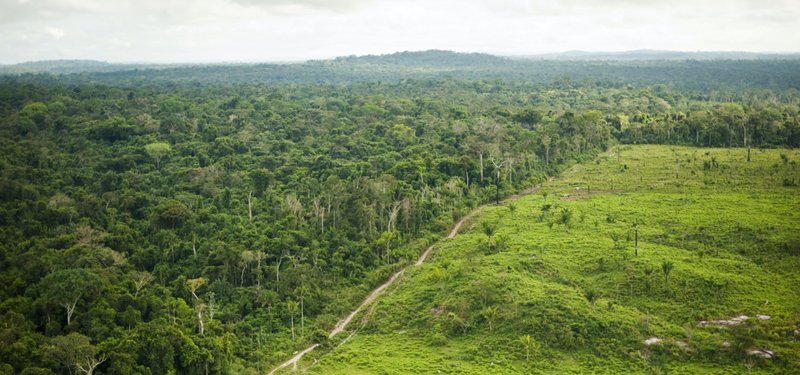
Health
Never has there been a time when the planet is more focused on human health; it is critical during this intense period to recognize the links between human health and economic health, and understand the benefit investing in nature-based solutions will have on both.
Headline statistics
- Natural environments in cities encourage exercise and can be part of the solution to addressing the global rise in noncommunicable diseases which account for 88% of European deaths.
- The OECD estimated the welfare cost from premature deaths stemming from exposure to outdoor fine particles and ozone at $5.3 trillion globally in 2017.
- Urban greening strategies have been found to reduce mortality rates under projected average warm season and heat wave conditions in 2050, by approximately 50%, depending on models and conditions.
- Investment in nature has a range of human health benefits. Many of the benefits people get from nature affect their physical and mental health and the links between the impact of natural ecosystems on the physical environment (air, water and land) and downstream human health changes are not always drawn together in the same study.[1]
Urban areas and health benefits of nature
- Urban areas benefit from nature. They are home to 56% of the population today[2], which is expected to increase to 68% by 2050.[3] International institutions such as the World Health Organization (WHO) have started recognizing the importance of protecting and creating urban natural environments[4]. Urban areas, if used for exercise[5], can be part of a solution to address the global rise in non-communicable diseases, which account for 88% of European deaths.[6]
Benefits from ecosystems on health and well-being
- Being in natural environments has direct benefits for mental health. It reduces stress and provides restoration of cognitive fatigue. A nationwide study in the Netherlands covering more than 900,000 people found people who grow up with low levels of green space were 55% more likely to develop a psychiatric disorder independent from effects of other known risk factors.[7]
- Trees can improve thermal comfort by providing shade from solar radiation and reducing air temperatures.[8] They can also help homeowners save money. The USDA Forest Service’s Northern Research Station found that trees can clean the air and shade homes while delivering homeowners in the U.S. more than $7 billion in energy savings.[9]
- Urban greening strategies were found to reduce mortality rates under projected average warm season and heat wave conditions in 2050, by approximately 50%, depending on models and conditions.[10]
- Urban green spaces make it more attractive for people to undertake physical activity.
Improving air quality is good for human and economic health
- Forests can improve local and regional air quality. TNC reports that for an average of US$4 per urban resident, municipal tree planting and urban greening programs could help cool cities while reducing life-threatening air pollution and offering many other co-benefits for individuals and communities. Urban trees provide substantial pollution reduction services – the same TNC report values these services for the world’s 10 megacities at $482 million per year.[11]
- Research has estimated the value of the service trees within New York City provide by removing fine particles from the atmosphere and consequently improve air quality and human health at $60.1 million per year. [12]
- The OECD estimated the welfare cost from premature deaths stemming from exposure to outdoor fine particles and ozone at $5.3 trillion globally in 2017.[13]
- A 2011 study found that a value of a hectare of an urban forest was $1,500 due to recreational opportunities, aesthetic enjoyment and environmental functions.[14]
- Conversely, nature loss can exacerbate the effects of air pollution, a major threat to health that causes between 3.4 and 8.9 million deaths every year.[15]
Disease and medicines
- Many of the drugs used today for health care and disease prevention were discovered from plant sources. Between 25-50% of pharmaceutical products are derived from genetic resources; and 70% drugs used for cancer treatment are natural or synthetic products inspired by nature. [16]
- Substitutes for natural medicines are often financially prohibitive: an estimated 4 billion people rely primarily on natural medicines for their healthcare, mostly in lower income countries. Although plants have been a major source of natural product drugs, only a fraction of the 400,000 plant species on Earth have been studied for their pharmacological potential. The untapped potential for future drug discovery and medical insights from biodiversity is vast but is diminishing because of biodiversity loss.[17]
- Although numbers vary, it’s been reported that as many as 80% of people living in rural areas in developing countries rely on traditional plant‐based medicines for basic healthcare.[18]
- With the world now acutely aware of the threat of animal-to-human disease transmission, we need to better understand the relationship between habitat degradation, biodiversity loss and human health. Adopting conservation and land management approaches that are holistic and consider the protection and restoration of natural and managed systems along with human wellbeing and pathogenesis are needed as populations rise.

Asia
Indonesia
The World Bank estimated that the haze from the 2015 forest fires in Indonesia caused $151 million of immediate health costs alone, with long-term costs still unquantified.[19] Many of these fires were spurred by forest conversion and peatland drainage for rice and palm oil production. It is estimated that one billion tons of CO2e is released into the atmosphere every year due to these activities.[20]

Europe
United Kingdom
The physical and mental-health benefits of natural environments (e.g. parks, woodlands and beaches) in the United Kingdom are estimated at GBP 2 billion (pounds sterling) per year.[21]

North America
United States
In the US, it is estimated that people who live within 0.6 miles of greenspace have lower rates of 15 major diseases, including heart disease (15% lower), diabetes (20% lower), and depression (25% lower). The same study estimated that greenspace can lower US health care costs by improving health, reducing the annual cost of cardiovascular disease ($330 billion), diabetes ($327 billion), and depression ($210 billion).[22]
Trees and forests in the conterminous United States removed 17.4 million tonnes of air pollution in 2010 alone, providing health benefits (avoidance of human mortality and incidences of acute respiratory symptoms) valued at $6.8 billion.[23]
Resources
[1] Engemann et al, Residential green space in childhood is associated with lower risk of psychiatric disorders from adolescence into adulthood (2019)
[2] World Bank Group, Population Estimates and Projections (2018)
[3] United Nations, Revision of World Urbanization Prospects (2018)
[4] WHO Regional Office for Europe, Urban green spaces: a brief for action (2017)
[5] Kaczynski & Henderson, Environmental Correlates of Physical Activity: A Review of Evidence about Parks and Recreation (2007)
[6] WHO Regional Office for Europe, Prevention and Control of Noncommunicable Diseases in the European Region: A Progress Report (2016)
[7] Engemann et al, Residential green space in childhood is associated with lower risk of psychiatric disorders from adolescence into adulthood (2019)
[8] Richards et al, Differential air temperature cooling performance of urban vegetation types in the tropics (2020)
[9] USDA, Trees Reduce Building Energy Use in U.S. Cities (2017)
[10] Stone et al, Avoided Heat-Related Mortality through Climate Adaptation Strategies in Three US Cities (2014)
[11] The Nature Conservancy, Planting Healthy Air (2016)
[12] Nowak et al, Modeled PM2.5 removal by trees in ten US cities and associated health effects (2013)
[13] OECD, The rising cost of ambient air pollution in the 21st Century (2017)
[14] Brander & Koetse, The value of urban open space: Meta-analyses of contingent valuation and hedonic pricing results(2011
[15] World Economic Forum, Nature Risk Rising (2020)
[16] Hong-Fang et el, Natural products and drug discovery. Can thousands of years of ancient medical knowledge lead us to new and powerful drug combinations in the fight against cancer and dementia? (2009)
[17] WHO, Connecting Global Priorities: Biodiversity and Human Health (2015)
[18] Oyebode et al, Use of traditional medicine in middle-income countries: a WHO-SAGE study (2016)
[19] World Economic Forum, Nature Risk Rising (2020)
[20] Griscom et al, National mitigation potential from natural climate solutions in the tropics (2020).
[21] OECD, Biodiversity: Finance and the Economic and Business Case for Action, report prepared for the G7 Environment Ministers’ Meeting (2019)
[22] Morris &Thomas, The Economic, Heath, and Social Benefits of Conservation: A Report Prepared on behalf of The Coalition for Our Natural Interest (2018)
[23] OECD, Biodiversity: Finance and the Economic and Business Case for Action, report prepared for the G7 Environment Ministers’ Meeting (2019)








